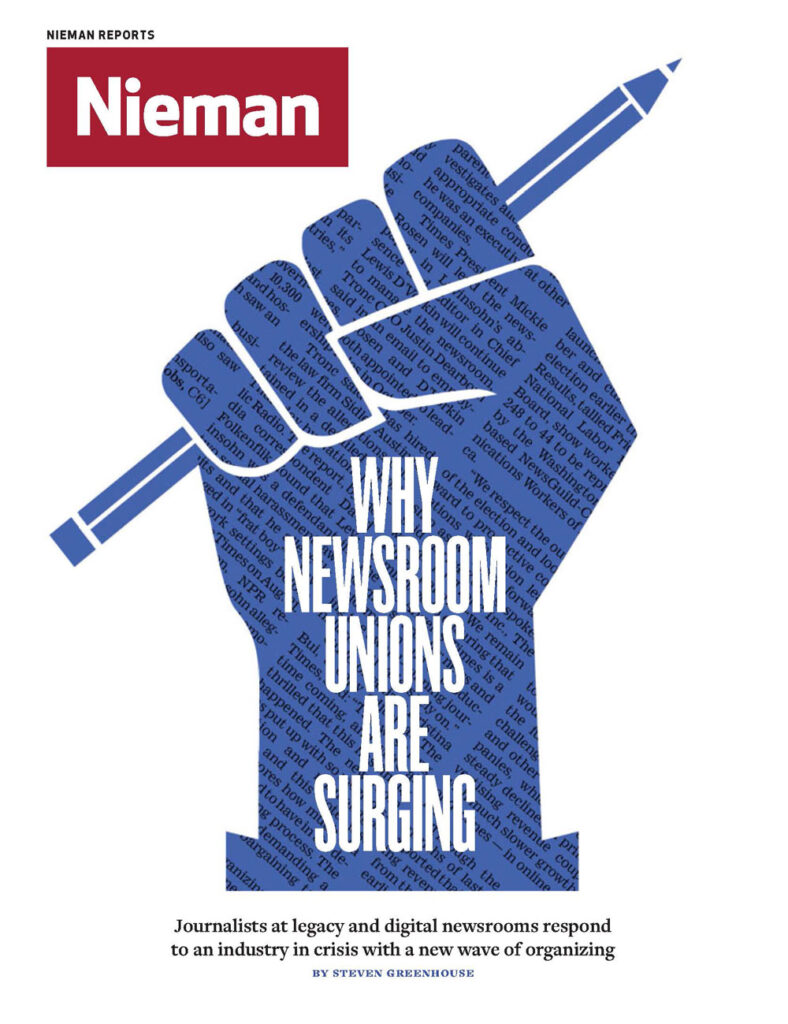ISSUE
Spring 2019

Why Newsrooms are Unionizing Now
When Gawker employees voted to unionize back in 2015, it was the first major news site to take that step. The now-defunct outlet’s move sparked a movement, with a wave of unionization taking place at both legacy and digital newsrooms across the country.
This surge comes as a bright spot in a labor movement that has been declining for decades—and as the media industry is in crisis. Labor’s supporters say the industry’s volatility began long before the surge of organizing, and that unionization actually improves publications. Journalists are saying “yes” to unions to lift salary floors, win or improve basic benefits, and provide some cushion during a time of uncertainty.
Masthead
Publisher
Ann Marie Lipinski
Editor
James Geary
Senior Editor
Jan Gardner
Editorial Specialist
Eryn M. Carlson
Staff Assistant
Shantel Blakley
Print Design
Pentagram










